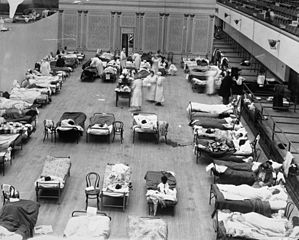
With cases skyrocketing and many scrambling to book third shots, one question feels more pressing than ever at the start of 2022: When will COVID-19 end?
The trajectory of pandemics — a term which refers to an epidemic of an infectious disease that has spread over a large region, usually globally — have varied widely depending on the type of disease, the time period, the politics and the quality of health care available. And sometimes, we consider a pandemic to have “ended” long before it ceases to be a problem worldwide.
Looking back at some of our previous pandemics or epidemics can give us an insight into how COVID-19 could come to end, both in epidemiological and social terms.
1918 FLU PANDEMIC
In the spring of 1918, the first wave of a deadly influenza started to spread. Around 500 million people —one third of the global population at the time — are thought to have contracted the virus during this flu pandemic.
One of the earliest cases was documented in March of 1918 in Kansas, U.S., but although the flu initially appeared mild, it quickly turned devastating.
People collapsed in the road. Entire towns retreated indoors, leaving the streets empty. A school in Pennsylvania started displaying the dead because funeral homes were overwhelmed.
Similar to COVID-19, the disease came in waves, making people feel as though they had defeated the virus, only be struck with another round of illness. Around four waves occurred between 1918 and 1920, with the second wave in the fall of 1918 causing the majority of deaths.
With no vaccine or treatments on the way, people attempted public health measures that are familiar to us: masking, discouraging public gatherings and trying to hold business outside.
So how did it end?
Read more...







